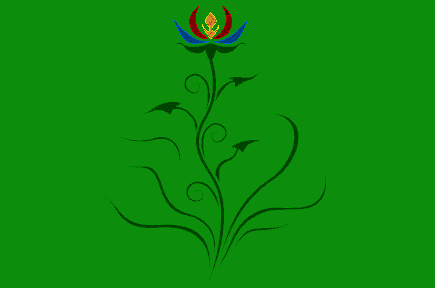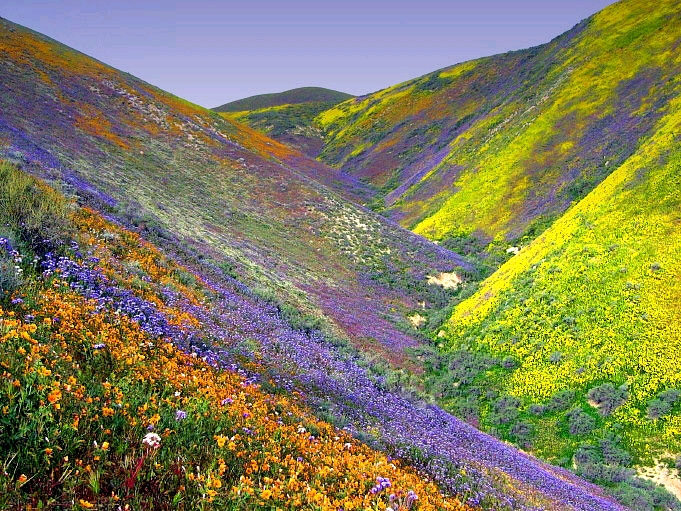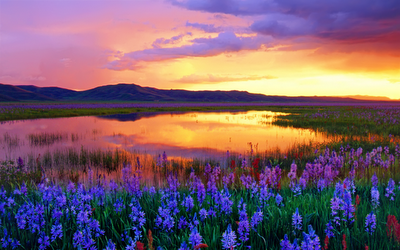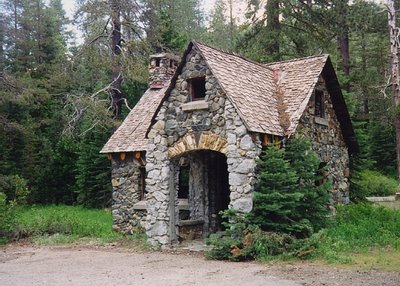Wildflower
| Wildflower Empire
| |||
| |||
|
Motto: "Nature's Strength" | |||
| Anthem: Ode to Gaia
| |||
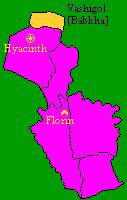
| |||
| Map versions | 15.3.1-Present
| ||
| Capital | Hyacinth | ||
| Largest city | Hyacinth, Florin
| ||
| Official language(s) | English
| ||
| Demonym | Wildfloran | ||
| - Adjective | Wildfloran
| ||
| Government | Constitutional Monarchy | ||
| - Emperor | Tamarack Rosa | ||
| - Speaker of the Senate | none | ||
| - Legislature | Court of Flowers
| ||
| Establishment | October 1, 2002 | ||
| -Ranked | NA | ||
| Area | ... km² | ||
| - Ranked | NA
| ||
| Population | 8 | ||
| - Active | 1 | ||
| - Ranked | NA
| ||
| Currency | Leafshare
| ||
| Abbreviation | WFL
| ||
| National website | none | ||
| National forum | none
| ||
| National animal | Venus Flytrap | ||
| National food | Vegetable Stew | ||
| National drink | Tea | ||
| National tree | Tree Rose | ||
Wildflower is a micronation founded in 2002 and originally established as an American government simulation, but gradually progressed into its own unique state. No longer a government simulation, Wildflower has its own detailed history and rich culture centered around core ideals that espouse a symbiotic relationship with nature, natural empathy (Gaianism), and a general environmental focus for the nation as a whole. As might be surmised by the name, flowers and flora in general play a large role in the culture and customs of the nation. In 2003 Wildflower advanced from simulation to micronation, claiming land on the fictional world of Micras and also real territory in the eastern United States of America. After a long hiatus from the internet, Wildflower again emerged in 2010 with plans to establish a stronger internet presence and interact with more micronations.
Etymology
Wildflower takes its name from the original nomads who spread wildflower seeds on the slopes of the highland steppe, eventually covering the rolling hills with a veritable palette of color. When the nomadic herders eventually settled in the hills and valleys, the region had become richly diverse in its flora, and the name Wildflower was applied to the region as a whole. The Valley of Flowers, from which Wildfloran civilization first emerged, also became the dominant picture of Wildflower society, further cementing the name to the entire area and its people.
History
Wildflower maintains two sets of historical accounts. One set is fictional and allows us to chronicle events that are simulated or otherwise culturally flourished. In this way our fictional history allows us to embellish the culture of Wildflower with aspects that would otherwise not exist, such as descriptions of landscapes, cities, costumes and clothing, foods, religious iconography, and so forth. This fictional history also ties in to our simulated land on the world of Micras, allowing us to create a well-rounded simulation. On the other hand, we also maintain a factual account of our history so that accurate records can be maintained of our physical achievements, which are of equal importance.
Fictional History
The Wildflower Empire was first established around the time of Age of Menelmacar in the central uplands of Apollonia, around four hundred and fifty years ago (micronational time measured in increments of fifty micro-years per actual year). It was so named due to the great prominence of wild flowers that spread across the rolling hills, painting a myriad of colors over the landscape; eventually this would become the Valley of Flowers. As one of the earlier empires of Micras, Wildflower was one of the few powers to control central Apollonia. It was also around this time that Babkha established full dominion over Eura and began sending diplomatic missions overseas. Likewise, the Wildflower Empire was also strong on the diplomatic front and sent emissaries far and wide. At the time Wildflower maintained relations with Shireroth, Slobovia, New Macadam, Audentior, Venitia, and others. This broad spectrum of relations allowed for a great influx of differing people and cultures, greatly shaping the future of the empire.
It was not long before Babkhan and Wildfloran met and began a diplomatic courtship. A Baatharzi Prince, Hussein Shervanis, became a frequent attendee to the Court of Flowers and soon became attached to the Wildfloran Princess, Viola Rosa. So attached did he become that the Shahanshah granted him leave from Babkha to marry the Princess, thus tying the Wildflower royalty to that of Babkha. Shervanis was styled as Prince Agavos Rosa and worked fervently to integrate himself with Wildflower society.
Over the next decade, Prince Agavos became heavily involved with philanthropy and, leaving most political duties to his wife, was highly regarded by the people. The Prince worked tirelessly to develop the empire and strengthened the relationship with Babkha. Indeed this association became of utmost importance when the Emperor died most suddenly, leaving the princess as his only child. Since the throne could only pass to a male heir, Prince Agavos was chosen to take the throne. The Wildfloran people and royalty supported this decision, and he was crowned as Emperor Agavos I.
The reign of Emperor Agavos and Empress Viola was marked by great prosperity for the Empire. Babkha continued to become a stronger ally of the Wildflorans and increasingly involved in Imperial affairs. The Emperor and Empress produced only a single heir, Prince Euphorbus. The young prince took the throne at the early age of twenty-three when Emperor Agavos died fighting barbarians in the Apollonian steppe. Unlike his father, Euphorbus was not an able politician and did not find eager support amongst the Wildflorans. It was also at this time that central Apollonia began reverting to barbaric ways and neighboring civilizations crumbled to dust. Unfortunately the two events compounded the situation and Wildflower began to see a steady decline in population and prosperity.
Within another two decades the Wildflower Empire had dwindled to a mere fraction of its original population. Vast swaths of land formerly filled with people were now empty hills where nature had reasserted herself. Of the vast civilization that had once claimed this space, only the wildflowers themselves, sown by the former human occupants, remained to show anyone had ever been there. Babkha, attempting to alleviate the situation, continued to send aid and advisors to the Court of Flowers. Alas, it came to little avail and Emperor Euphorbus died at the age of sixty-nine without producing an heir. Linked to the throne of Kapav by marriage, the crown of Wildflower passed to the Shahanshah and the Empire became a dominion of Babkha.
The shift in power was met with little objection as few were left to object. Indeed, despite all the assistance provided, Babkha could do little to stem the tide of events. In the end, the Babkhan government sponsored the wholesale migration of the Wildflorans to the southeast coast of Apollonia where they could find more amenable lands closer to the Euran heartland. This migration resulted in the formation of the colony of Terre d’Riches and brought to a close the first chapter of Wildflower’s history.
The formation of Terre d’Riches essentially ended the Wildflower Empire as an entity and saw the Rosa Dynasty folded into the Shervanis Dynasty of Baatharz, with the title of King of Wildflower becoming one of the Emir’s many titles (as Shah az Vashigol). While many Wildflorans moved to Terre d’Riches, their suzerain passed briefly from the Shervanis Dynasty to that of the Majeed Dynasty. The Majeeds were rulers from Kumarastan who held a vastly different agenda than their predecessors. Instituting a vast program of reform, all but a few scant traces of Wildflower culture and society was eliminated in favor of Babkhan equivalents and the old empire was nearly forgotten were it not for historic chronicles.
As Terre d’Riches grew and waned over the following decades, equivalent names became more predominant. Wildflower began to be referred to as Vashigol – essentially the same name in Babkhi – and people began to forget about their ancestral homelands. When Terre d’Riches itself was abandoned in favor of the Great Euran Consolidation, its occupants were again moved. This time their journey was across the sea to Baatharz on the northern tip of Eura. Here much of the original Wildfloran population disseminated into the rest of the Babkhan population to the point where little original lineage could be traced back. More recently the Babkhan government sponsored the re-development of the Vashigol colony in the Apollonian interior, and the Baatharzi Emir still retains the title of Shah-az Vashigol. But much of the original population has congealed itself onto the remainder of its original territory further south, and the ancient capital of Hyacinth has recently been restored and renovated after being derelict for over a century.
A distant cousin of Prince Euphorbus was elevated to the position of Emperor after a careful tracing of his lineage. Tamarack Rosa was a mere peasant farmer when he was discovered by explorers charting the regions archaeological remains. Apparently Emperor Agavos' wife, Viola, fathered another son after the death of her husband. However, the child's father was not of royal stock and therefore unfit (at the time) to rule. Such restrictions today are, however, nonsensical and Tamarack, a direct descendant, was deemed fit to rule as Emperor. Crowned in an elaborate ceremony at the Court of Flowers, the young ruler has since proven himself a capable and practical leader, devoid of the embellishments of pampered royalty. Working in conjunction with the newly-elected government, Emperor Rosa has striven to bring Wildflower back into mainstream society and to rebuild the prosperity and integrity of the country.
Realtime History
The Wildflower Empire was founded in 2002 as an American government political simulation. At the time, the objective had been to simulate American politics. Thus there was a President - despite being styled an Empire - along with a Senate, House of Representatives, and essentially a direct clone of all American federal institutions. Initially this project drew in a great number of interested people and participants - at one point numbering close to fifty active citizens. At the time this was considered a remarkable achievement for a micronation. Despite the large number of interested individuals, Wildflower could not keep the momentum or interest going and the amount of participants began to quickly dwindle. By 2003 the country's population had slumped down to only two active citizens, and finally only one person remaining; a Babkhan by the name of Amir Shervanis.
The country was passed on to Babkha, who moved it wholesale to the southern coast of Apollonia and renamed it Terre d'Riches, where it remained for two more years before passing to the Republic of Antica sometime in 2006. After this point Terre d'Riches itself vanished and along with it the last trace of the Wildflower Empire. During its time as Terre d'Riches the country was essentially stripped of any relation to its previous incarnation and restyled as a new country unto itself.
In 2010 the last remaining citizen of Widflower, Amir Shervanis, decided to re-establish the country and adopt the Wildfloran name of Tamarack Rosa, assuming the title of Emperor of Wildflower. Thus began Wildflower's new ascension as a micronation.
Government and politics
The Wildflower Empire is a constitutional monarchy wherein the Emperor (or Empress) is the Head of State, and the Prime Minister is the Head of Government. Unlike most patriarchal monarchies, where male monarchs dominate the line, Wildflower emphasizes equal rights of inheritance and has followed both patriarchal and matriarchal lines as times demand.
Executive
The Imperial Throne wields executive authority and approves matters passed by the Court of Flowers, the Wildfloran legislature. The Emperor/Empress may not declare war unless a prior State of Emergency has been declare and/or there is a majority vote in favor passed by the legislature. The Emperor is charged with the execution of imperial law, alongside the responsibility of appointing imperial executive, diplomatic, regulatory, and judicial officers, and concluding treaties with foreign powers, with the advice and consent of the Senate. The Emperor is further empowered to grant imperial pardons and reprieves, and to convene and adjourn either or both houses of the Court of Flowers under extraordinary circumstances.
Legislative
The Court of Flowers is a bicameral legislature divided into two chambers, the Senate and House of Representatives. This legislative system has a long history dating back to the earliest days of the country and its inspiration from American-style government. With the Senate, each of Wildflower's five states is represented by one Senator, regardless of population. The Senate has several exclusive powers not granted to the House, including consenting to treaties as a precondition to their ratification and consenting or confirming appointments of Cabinet secretaries, imperial judges, other imperial executive officials, military officers, regulatory officials, ambassadors, and other imperial uniformed officers, as well as trial of imperial officials impeached by the House. The House of Representatives, on the other hand, is composed of State Representatives based proportionally to the population of the state. The Constitution grants the House several exclusive powers: the power to initiate revenue bills, to impeach officials, and to elect an Imperial Heir in case of an undeclared successor to the throne.
Judicial
The Wildfloran Judicial System follows a model similar to that of the United States. A Supreme Court based in Hyacinth acts as a high court for the empire and as a court of last resort for appeals. Below the Supreme Court are the District Courts; one for each district of the empire.
Geography
Territory on Micras
In 2002 the Wildflower Empire transitioned from a government simulation to an online micronation by claiming land on the planet Micras, the fictional world hosted by the Micronational Cartography Society. The original territory of the nation consisted of the central highlands and steppe of the continent of Apollonia. This portion of land allows us to simulate the effects of large-scale populations, natural resource management, conservation, civil engineering, and other important skills of state that, ultimately, prove to enrich the micronational experience.
Apollonia is the largest and central continent of the world Micras, a habitable planet in the Atos Star System. Wildflower itself is located in the central area of the continent, traversing two high mountainous regions in the north and south, and having central steppe and a mix of lowland/highland valleys throughout. The combination of climate and continental weather make the region very fertile, and is a major reason that the local flora is so profuse.
Territory on Earth
In order to exist both in fictional and non-fictional contexts, the Wildflower Empire also claims real territory in the eastern United States of America. Presently this consists of small plots of land claimed in Massachusetts, Connecticut, and New York.
The empire also claims portions of the asteroid Vesta, with the stated intent of establishing a biosphere at some far point in the future. This proposed colony has been called Starflower, and hopes to combine scientific research with colonization so that multiple benefits can be achieved through the project.
Districts
Wildflower has traditionally held five districts - the equivalent of a state - throughout its entire history, and this number has not fluctuated since. The five districts of the empire are: Floribunda District, Violetta District, Tulipania District, Gardenia District, and Coniferalis District
Military
Being a landlocked country, the Wildflower Empire does not maintain a navy and instead focuses its strength in the army and air force. The Wildfloran Army is well-renowned for its versatile land forces and its special forces units, the Legion of Thorns.
The W.A.F is divided into the following three branches, plus two sub-branches of the Army:
- Wildfloran Army (Army)
- Enforcement Operations (Police Force)
- Legion of Thorns (Special Operations)
- Air Force
Foreign Relations
Wildflower maintains an open foreign policy and seeks to achieve amiable relations with all its neighbors and other micronational states, regardless of political styling or religious creed. The only exceptions to this open policy is against fascist or otherwise hate-inspired nations, of which a no-tolerance policy exists. In cases of contact with such states the government prefers a policy of non-interference unless that state shows active aggression against Wildflower or its allies.
Culture
Wildfloran culture tends to incorporate many natural elements into its culture. Most construction is of stone, which is low in maintenance and nearly impervious to weather - in addition to being a sustainable material. The Wildfloran people also take great pride in maintaining the natural beauty of the land, and is a major factor in why many large tracts of the country are designated as wildlife preserves or parks with conservation restrictions. The wildflower steppe, for instance, is a fragile ecology very sensitive to the footprint of man and could very easily be destroyed if not protected. Likewise, wetland areas that are essential to keeping water purified, and endangered species such as the Wildfloran Bear, are reason enough to maintain these stable ecosystems. But in addition to maintaining the natural ecology, these open spaces offer a scenic beauty unparalleled elsewhere.
Role of Flora
As might be surmised by the common use of flower and plant-related names, flora plays a major role in the culture of Wildflower. Just as, for example, how the Gods of Olympus dominated nearly every aspect of Ancient Greek culture, so do the role of plants equally dominate Wildfloran culture. The country's capital, Hyacinth, takes its name from the common spring bulb of the same name, and many other cities bear similar flora-oriented names.
Flowers have been used since the earliest times of Wildfloran history and, as such, have taken on mythic proportions in their influence on culture. The earliest evidence of flower cultivation goes back to the original nomadic settlers who came upon the Valley of Flowers, which is assumed was mostly devoid of much flora save for a small area around the central region. Considering the barren and bleak palette of the steppe and adjacent mountains, this burst of color must have seemed a gift from the gods in the eyes of the primitive nomads. Thus began the first flower-worship cults as settlers built garden temples and spread wildflower seeds across the valley. By the time the Wildflorans emerged from the Valley of Flowers to expand into neighboring regions, flower-worship had become much more refined, more equivalent at this stage to the old Roman and Greek religions.
The mythical aspects of flower-worship gradually expanded to encompass more aspects of nature. Certain old-growth forests became revered and sacred places. Animals were, by virtue of being part of nature, extended the benefit of being respected and protected; although not nearly as much as flowers. Thus over time flower-worship began to transition into a form more akin to nature-worship. Of course, with the advent of science and the progress of civilization, this religion too fell by the wayside and transitioned again into modern Gaianism. Nonetheless, the deep history and impact of flowers on Wildfloran religion and society has left a lasting impression that still influences modern society today.
Gaianism
Gaianisn is a natural religion practiced by, although not mandatory to, Wildflorans. As a nature religion Gaianism promotes the Gaia Concept in that humans are but a small part of a complex whole encompassing all aspects of nature - the global ecosphere. The importance of environmentalism, conservation, and sustainability are paramount objectives in Gaian philosophy. Gaianism does not promote worship per say, but instead promotes a healthy lifestyle of symbiosis and cooperation with ones environment. Temples, in the traditional sense, do not exist in Gaian religion and instead followers typically dedicate a garden in honor of Mother Gaia.
Originally a flower-worship cult, Gaianism eventually spread to encompass natural landscapes and animals, taking on more and more aspects of revering the natural world. The first followers enshrined their deities in plants; mighty oaks became watchful gods, creeping ivies sought to strangle sinners, and flowers were the souls of good men and women reborn. Eventually this transitioned into a more Greco-Roman style worship and the plant deities took on human or humanoid forms. Always a matriarchal religion, the ruling deity has remained Mother Gaia, the embodiment of the planet itself. Other lesser gods served Mother Gaia in maintaining Nature's Path, a creed of ecological balance maintained between humans and nature. Such gods had particular niches; Arboris was the god of the forests, Malus the god of fruit, Dolphis the god of the oceans, Windu the god of the skies, and so on and so forth.
With the start of the Industrial Revolution, science began to advance at an astronomical rate. Since science played a key role in understanding ecology, it quickly began to erode Wildflorans embodiment of their deities in forms akin to themselves. Gaianism saw its next big transition at this point as sciences such as biology, geology, meteorology, and other fields quickly unveiled the interactions of planetary ecology. The gods no longer became necessary in order to maintain Nature's Path. It was at this point that Gaianism first began to be practiced as a natural religion that simply revered the natural ecology of the world. Over the following centuries the old gods of Gaianism disappeared as a new form of religion based on science took hold. Today, most references to the old gods are made in history books or for the sake of children's stories.
